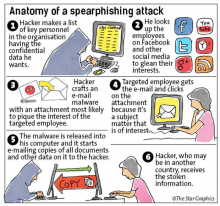JPMorgan hackers altered, deleted bank records, says report
The scope of yesterday's computer attack against JPMorgan Chase and at least one other bank appears to be much larger than initially reported.
In addition to possibly affecting seven financial organizations, instead of two as originally reported, some bank records at JPMorgan were altered and possibly deleted, reported CNN, citing unnamed sources. The source of the attacks is not yet known.












































































